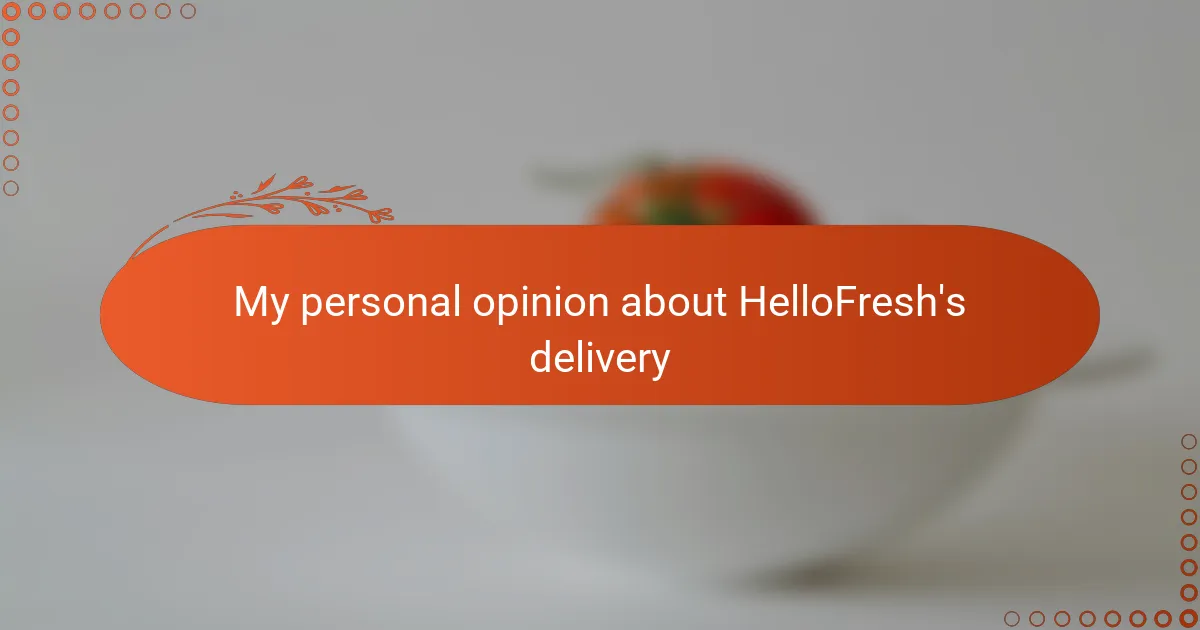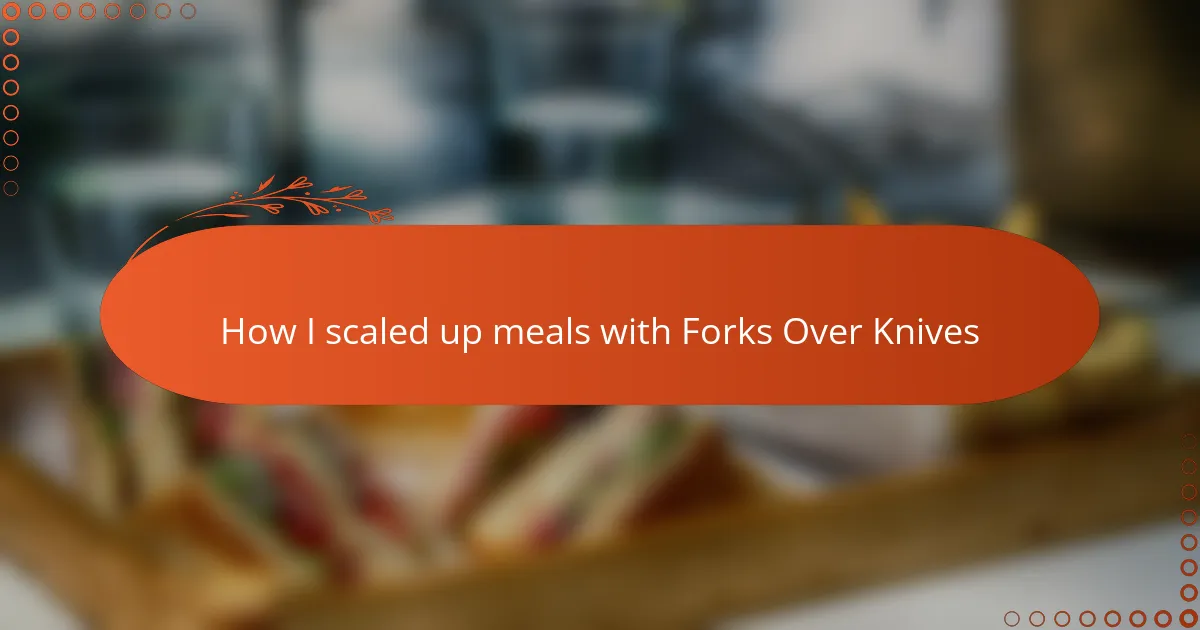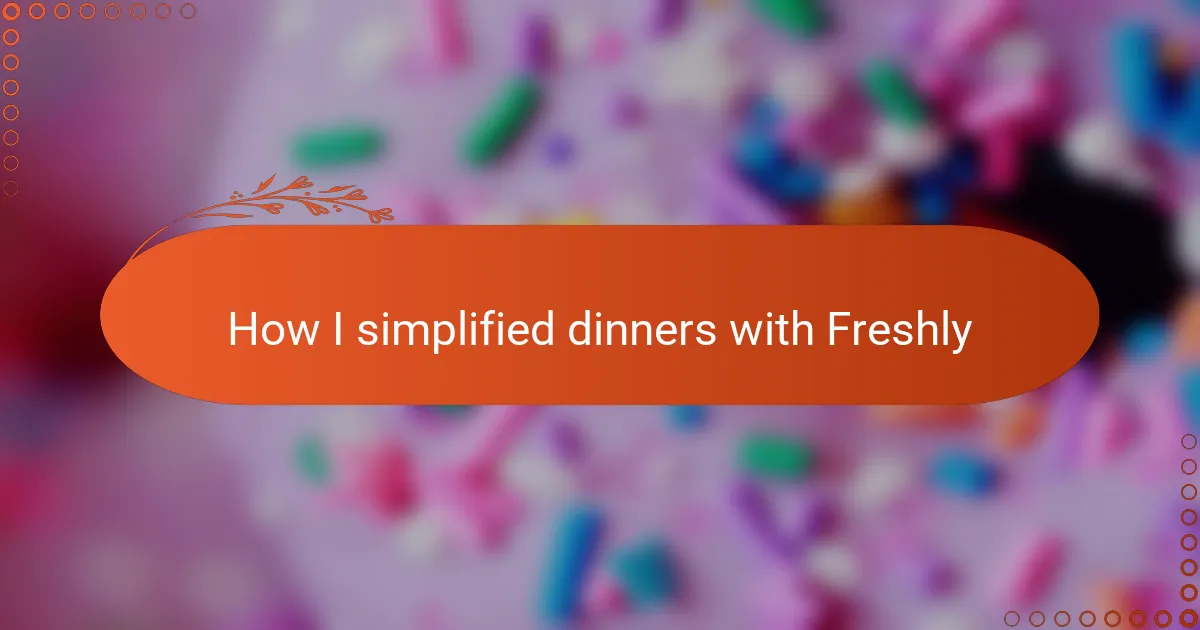Key takeaways
- Homesteading cooking emphasizes whole, fresh ingredients and a connection to self-sufficiency, fostering a sense of accomplishment.
- Pinterest serves as an effective tool for meal planning by providing visual inspiration and allowing users to organize ideas suited to their lifestyles.
- Personalizing and organizing Pinterest boards helps streamline recipe access, sparking ongoing creativity and seasonal cooking adaptations.
- Adapting recipes to utilize homegrown ingredients promotes flexibility and empowers cooks to align meals with their homesteading values.
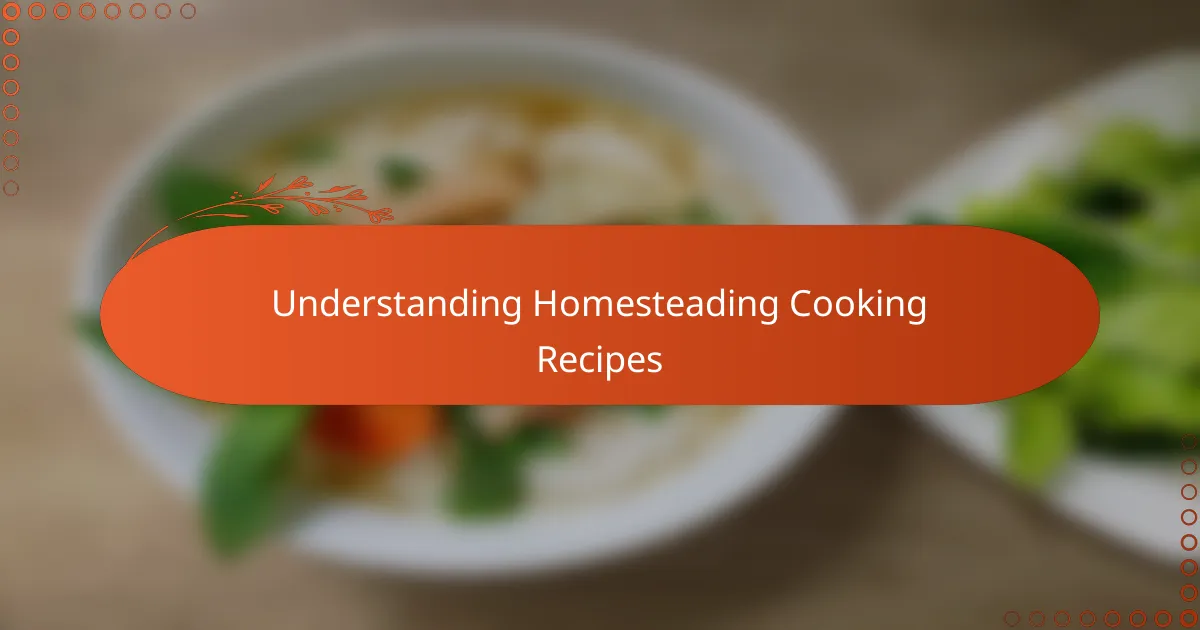
Understanding homesteading cooking recipes
Homesteading cooking recipes have always felt like a bridge to simpler times for me. They embrace whole, fresh ingredients often sourced right from your backyard or local market. Have you ever noticed how these recipes prioritize nourishment and seasonality over convenience? That thoughtful approach changes how I view every meal.
What makes these recipes truly special is their connection to self-sufficiency and tradition. When I first tried preserving a summer harvest or baking bread from scratch, it wasn’t just about the food—it was about reclaiming control over what ends up on my plate. Doesn’t that idea bring a comforting sense of accomplishment?
Understanding these recipes means appreciating the intentionality behind each ingredient and method. It’s less about following strict instructions and more about embracing a lifestyle where cooking is an act of care and creativity. Have you ever sensed that deeper connection while preparing a home-cooked dish? That’s the heart of homesteading cooking to me.
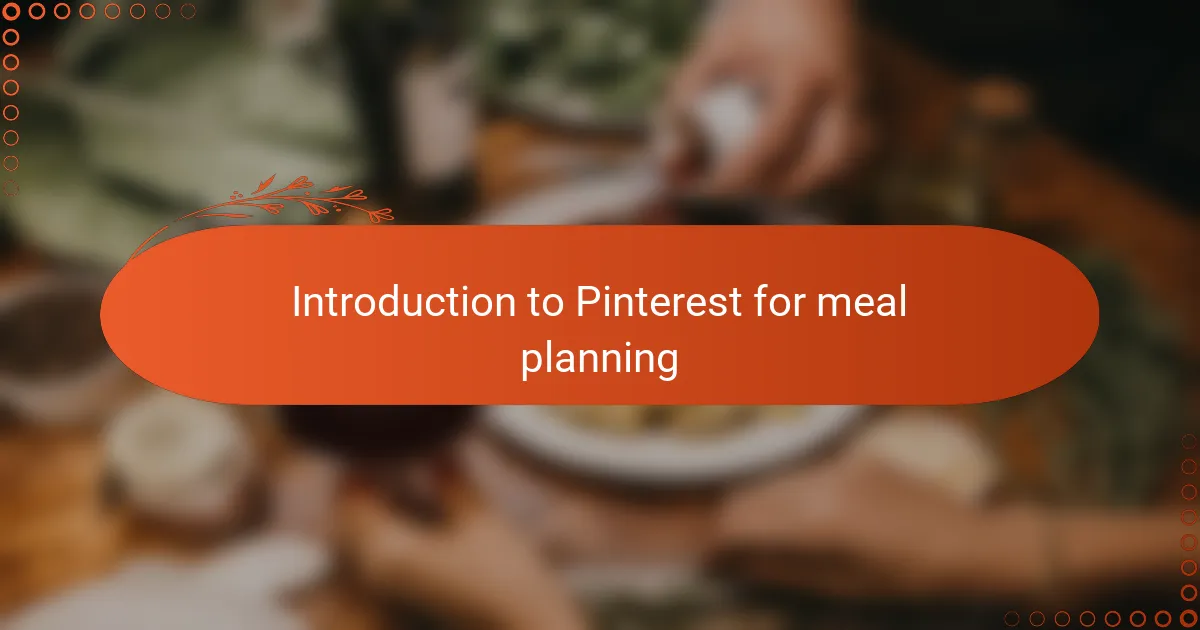
Introduction to Pinterest for meal planning
When I first dipped my toes into Pinterest for meal planning, I was amazed at how quickly it became more than just a digital recipe box. Have you ever tried scrolling through endless photos and suddenly felt inspired to cook something you hadn’t even considered before? That’s exactly what happened to me—I found myself excited about meals weeks in advance.
What I love about Pinterest is how it organizes ideas visually, making it easy to find seasonal recipes that fit my homestead lifestyle. I remember pinning a simple garden-to-table dinner that perfectly matched what I had growing outside, which felt like a small victory in aligning my cooking with the rhythms of nature.
Isn’t meal planning usually overwhelming? Pinterest broke that cycle for me by providing bite-sized inspiration paired with practical steps. It’s not just about saving recipes—it’s about creating a collection that feels uniquely mine, blending tradition with fresh creativity.
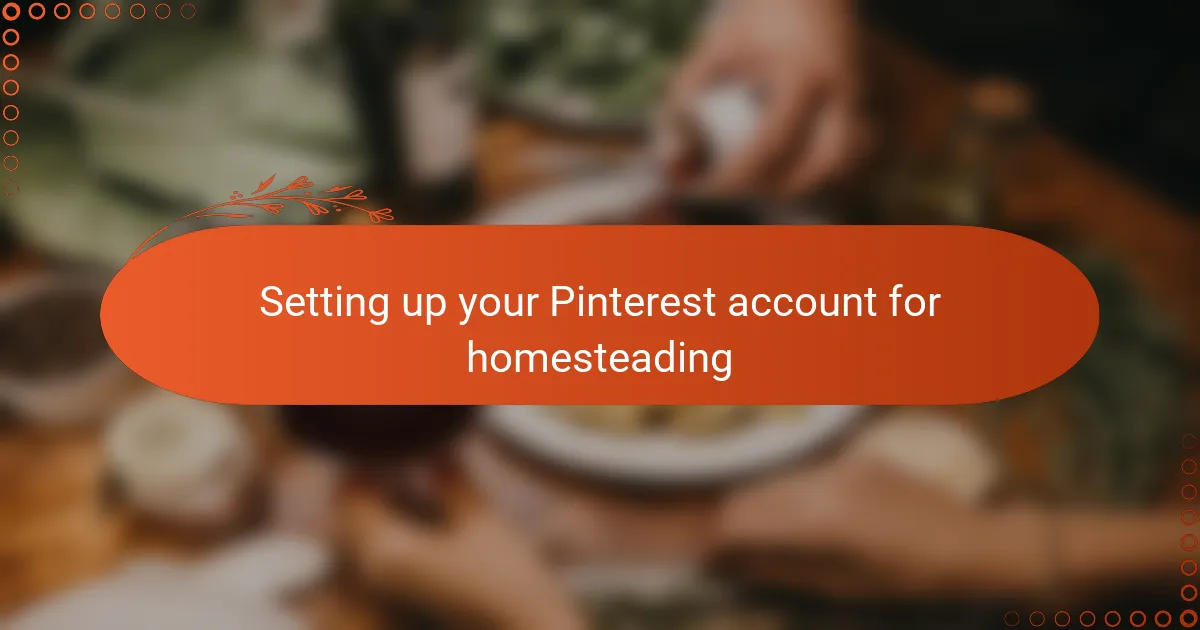
Setting up your Pinterest account for homesteading
Setting up my Pinterest account for homesteading felt like carving out a little space for my passions online. I started by choosing boards that reflected everything from preserving and gardening to rustic baking—each one a mini-archive of ideas tailored to my lifestyle. Have you ever found that organizing your thoughts visually makes the whole process smoother? That’s exactly what happened here.
Next, I personalized my profile with a clear description so others interested in homesteading could find and connect with my content. It felt like stepping into a community where shared values around sustainability and simple living were the norm. Don’t you think making your digital presence reflect who you really are encourages more meaningful interactions?
One trick I discovered was using keywords related to homesteading right in my board titles and pins. This small step helped me uncover treasures of meal ideas that might have otherwise been buried under generic content. Have you ever been surprised by how much the right words can unlock a world of inspiration? It made all the difference in turning Pinterest into a homestead-friendly meal planning tool.
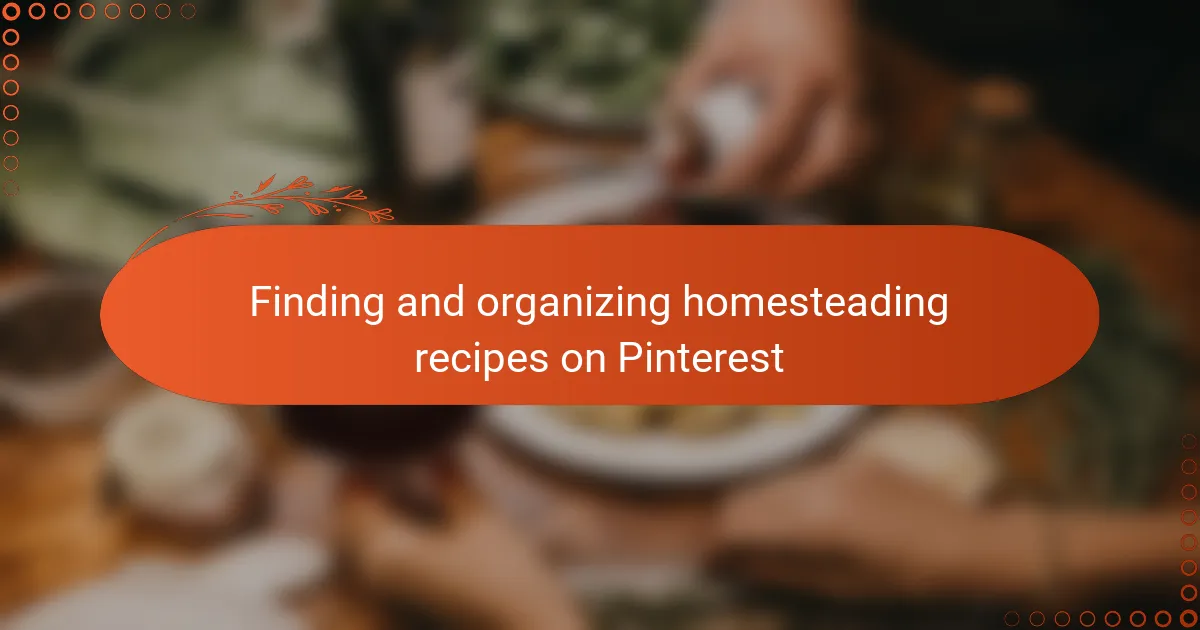
Finding and organizing homesteading recipes on Pinterest
Finding homesteading recipes on Pinterest quickly became my favorite digital treasure hunt. I started by searching specific ingredients I had on hand, like fresh eggs or seasonal squash, and found an endless stream of creative dishes rooted in simplicity and tradition. Have you tried narrowing down your searches this way? It really helps cut through the noise and brings you exactly what you’re craving.
Once I found gems, organizing them was key to making Pinterest truly useful for me. I created boards for different meal types—breakfast, preserving projects, hearty dinners—that acted like little shelves in a virtual kitchen. This system saved me from scrolling endlessly when hunger struck or inspiration lagged, turning discovery into easy access.
What surprised me most was how revisiting these organized boards sparked new ideas each season. For example, seeing past pins about fermenting reminded me to try my hand at sauerkraut again last fall. Do you ever notice how a well-kept collection feeds ongoing creativity? That’s what made Pinterest not just a repository but a living source of homesteading meal inspiration.
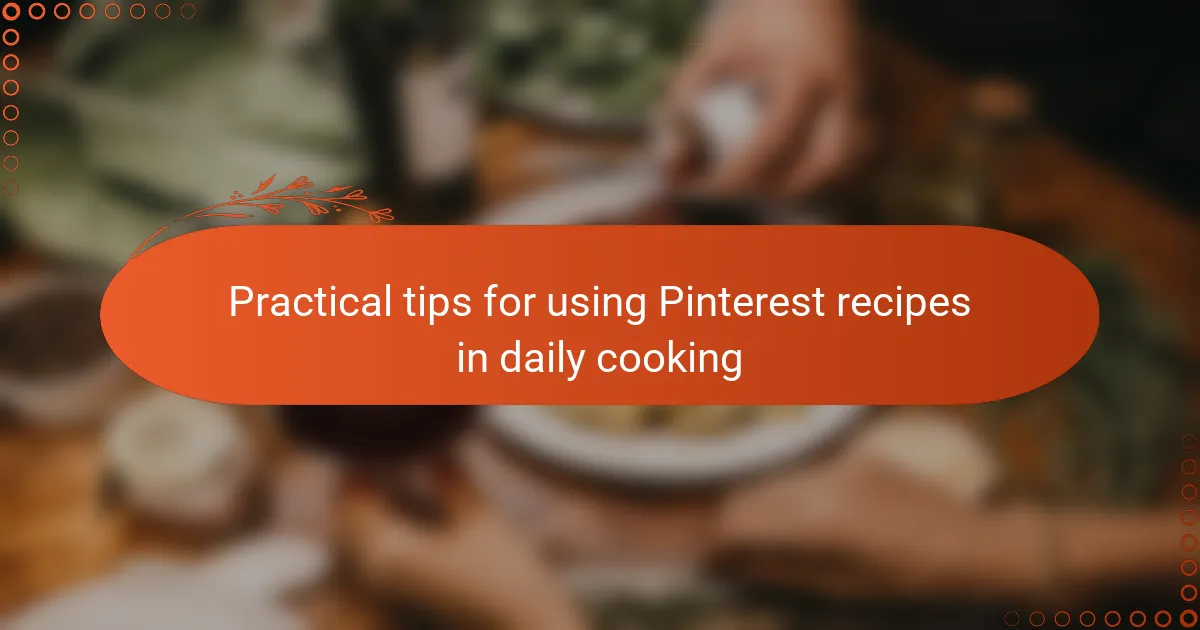
Practical tips for using Pinterest recipes in daily cooking
One tip that transformed my daily cooking was bookmarking only recipes that matched what I typically have on hand. Have you ever pinned dozens of recipes but never actually tried them? Narrowing down my pins to realistic, homestead-friendly meals saved me the frustration of hunting for elusive ingredients.
I also learned to adapt recipes instead of following them rigidly. When a Pinterest recipe calls for an ingredient I don’t have, I consider alternatives from my pantry or garden. This flexibility keeps cooking fun and creative, which is so important when you’re juggling homesteading tasks alongside meal prep.
Lastly, I make it a habit to review my saved boards each week before grocery shopping or harvesting. Revisiting my curated collection helps me plan meals that sync with what’s seasonal and available, turning Pinterest from a passive inspiration tool into an active part of my cooking routine. Have you tried pausing to reflect on your saved ideas before heading to the kitchen? It makes all the difference.

Personal experiences with Pinterest meal ideas
Scrolling through Pinterest for meal ideas quickly became one of those guilty pleasures that turned into genuine excitement. I remember one chilly afternoon, browsing through pins of rustic soups and stews, feeling the comfort of nearly forgotten flavors come alive before I even stepped into my kitchen. Isn’t it amazing how a single image can spark a craving and then a whole new cooking adventure?
Sometimes, I stumbled upon recipes that perfectly matched what I had picked fresh from the garden that morning. It felt like a little confirmation that my homestead cooking could be both creative and intentional. Have you ever experienced that satisfying moment when your digital finds align seamlessly with your daily harvest? It’s a small joy but one that made meal planning something I looked forward to.
What I appreciate most is how Pinterest meal ideas nudged me out of repetitive cooking habits without overwhelming me. Instead of choosing blindly, I began selecting pins with ingredients I actually wanted to cook with or preserve. That thoughtful curation turned Pinterest into a trusted companion, rather than just another endless scroll. Doesn’t that make all the difference when time and resources are precious?
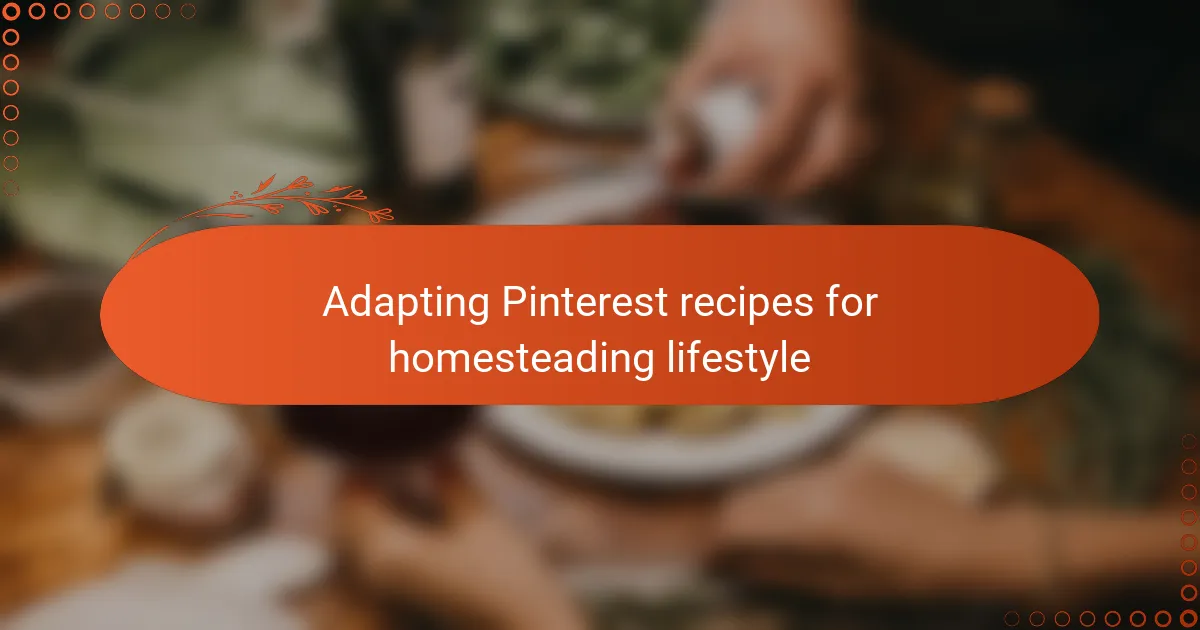
Adapting Pinterest recipes for homesteading lifestyle
Adapting Pinterest recipes for a homesteading lifestyle often means looking beyond the original instructions and imagining how they fit with what I actually grow or raise. When I see a recipe calling for exotic spices or store-bought shortcuts, I ask myself: “What can I substitute from my pantry or garden?” This way, the recipe becomes a flexible starting point rather than a rigid blueprint.
I also find that scaling recipes to match seasonal abundance is key. There have been times when a Pinterest pin inspired me to make a simple vegetable stew, only to realize I had twice the amount of fresh produce from my garden. Instead of feeling overwhelmed, I tweak the recipe to create extra servings or preserves. Doesn’t modifying a recipe to handle your harvest feel empowering rather than restrictive?
Sometimes, it’s the little adjustments that matter most—like using homemade broth instead of store-bought, or swapping out refined flour for whole-grain alternatives I mill myself. These changes don’t just elevate the dish; they reconnect me to my homesteading values of simplicity and self-reliance. Have you noticed how small choices in the kitchen can transform a meal into a meaningful reflection of your lifestyle?

